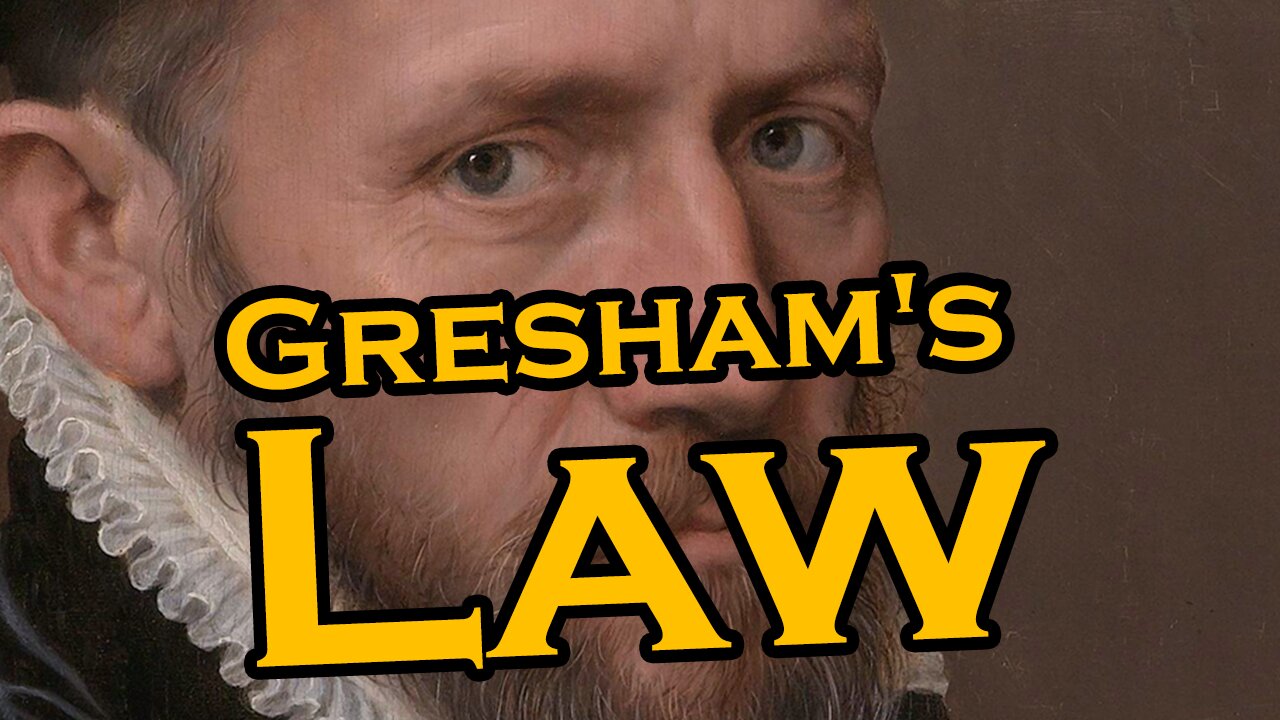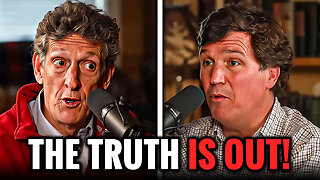Premium Only Content

What is Gresham's Law? Compact Explanation
Article made on Wikipedia: https://en.wikipedia.org/wiki/Gresham%27s_law
In economics, Gresham's law is a monetary principle stating that "bad money drives out good". For example, if there are two forms of commodity money in circulation, which are accepted by law as having similar face value, the more valuable commodity will gradually disappear from circulation.
The law was named in 1860 by economist Henry Dunning Macleod after Sir Thomas Gresham (1519–1579), an English financier during the Tudor dynasty. Gresham had urged Queen Elizabeth to restore confidence in then-debased English currency. The concept was known centuries earlier in classical Antiquity and in medieval Europe, the Middle East and China.
1. "Good money" and "bad money".
Under Gresham's Law, "good money" is money that shows little difference between its nominal value (the face value of the coin) and its commodity value (the value of the metal of which it is made, often precious metals, nickel, or copper).
In the absence of legal-tender laws, metal coin money will freely exchange at somewhat above bullion market value. This may be observed in bullion coins such as the Canadian Gold Maple Leaf, the South African Krugerrand, the American Gold Eagle, or even the silver Maria Theresa thaler (Austria) and the Libertad (Mexico). Coins of this type are of a known purity and are in a convenient form to handle. People prefer trading in coins rather than in anonymous hunks of precious metal, so they attribute more value to coins of equal weight.
The price spread between face value and commodity value is called seigniorage. As some coins do not circulate, remaining in the possession of coin collectors, this can increase demand for coinage.
On the other hand, bad money is money that has a commodity value considerably lower than its face value and is in circulation along with good money, where both forms are required to be accepted at equal value as legal tender.
In Gresham's day, bad money included any coin that had been debased. Debasement was often done by the issuing body, where less than the officially specified amount of precious metal was contained in an issue of coinage, usually by alloying it with a base metal. The public could also debase coins, usually by clipping or scraping off small portions of the precious metal, also known as "stemming" (reeded edges on coins were intended to make clipping evident). Other examples of bad money include counterfeit coins made from base metal. Today virtually all circulating coins are made from base metals, known as fiat money. While virtually all contemporary coinage is composed solely of base metals, during certain contemporary, 21st century years in which copper values were relatively high, at least one common coin (the U.S. nickel) still maintained "good money" status (largely depending on market rates).
In the case of clipped, scraped, or counterfeit coins, the commodity value was reduced by fraud, as the face value remains at the previous higher level. On the other hand, with a coinage debased by a government issuer, the commodity value of the coinage was often reduced quite openly, while the face value of the debased coins was held at the higher level by legal tender laws.
2. Examples.
Silver coins were widely circulated in Canada (until 1968) and in the United States (until 1964 for dimes and quarters and 1970 for half-dollars) when the Coinage Act of 1965 was passed. These countries debased their coins by switching to cheaper metals thereby inflating the new debased currency in relation to the supply of the former silver coins. The silver coins disappeared from circulation as citizens retained them to capture the steady current and future intrinsic value of the metal content over the newly inflated and therefore devalued coins, using the newer coins in daily transactions.
The same process occurs today with the copper content of coins such as the pre-1997 Canadian penny, the pre-1982 United States penny and the pre-1992 UK bronze pennies and two pence. This also occurred even with coins made of less expensive metals such as steel in India.
3. Theory.
The law states that any circulating currency consisting of both "good" and "bad" money (both forms required to be accepted at equal value under legal tender law) quickly becomes dominated by the "bad" money. This is because people spending money will hand over the "bad" coins rather than the "good" ones, keeping the "good" ones for themselves. Legal tender laws act as a form of price control. In such a case, the intrinsically less valuable money is preferred in exchange, because people prefer to save the intrinsically more valuable money.
Consider a customer purchasing an item which costs five pence, who possesses several silver sixpence coins. Some of these coins are more debased, while others are less so – but legally, they are all mandated to be of equal value. [Continue on Wikipedia]
-
 1:15:19
1:15:19
Surviving The Survivor: #BestGuests in True Crime
2 days agoDonna Adelson's Defense Witnesses Get Caught Up on Stand; Will Jurors Believe Them?
23 -
 LIVE
LIVE
The Bubba Army
22 hours agoTyson vs Mayweather SUPERFIGHT! - Bubba the Love Sponge® Show | 9/05/25
2,692 watching -
 25:26
25:26
World2Briggs
18 hours ago $0.63 earnedTop 15 Most Visited Cities in the World
3.88K1 -
 LIVE
LIVE
BEK TV
23 hours agoTrent Loos in the Morning - 9/05/2025
209 watching -
 LIVE
LIVE
FyrBorne
2 hours ago🔴Warzone M&K Sniping: This May Be The Most Broken Update Yet
68 watching -
 10:59
10:59
Degenerate Jay
16 hours ago $1.45 earned007 First Light Is The James Bond Game Fans Deserve
19K2 -
 9:11
9:11
Faith Frontline
14 hours agoTucker Carlson SHOCKED As Cliffe Knechtle Reveals God’s Chosen People
6.81K8 -
 23:10
23:10
Jasmin Laine
17 hours agoCTV Host Visibly UNCOMFORTABLE As Guest Calls Canadians RACIST—Poilievre Leaves Them SPEECHLESS
12K6 -
 20:18
20:18
Fit'n Fire
17 hours ago $0.41 earned*NEW* CZ P10C OR Ported -- First 500 Rounds
7.32K1 -
 14:41
14:41
Nate The Lawyer
1 day ago $0.95 earnedWhy Hasn’t Raja Jackson Been Arrested Yet?
9.49K15